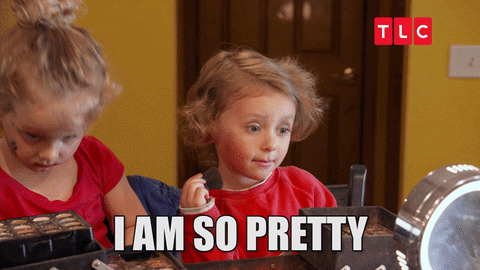How Often Should I Refresh the Content on My Website? [And Why Is It Important?]
If it's been a while since you made updates to your website...it might be time.

Love is in the air, and to show our readers how much we love ‘em, we’re singing our favorite marketing strategy tips to the tune of a Valentine’s Day favorite! (Feel free to sing along!)

A marketing strategy without lead generation is like a cupcake without icing—not nearly as enticing! One of the best ways to find leads who are actually interested in your brand and products is to create lead generating content.
Lead generating content is engaging content that meets customers where they are in the buyer's journey. It should be interesting, useful, and speak to customer’s pain points. Often embedded in lead generating content is a lead magnet—a free item or service that is given away for the purpose of gathering contact details.
Here are 3 types of lead generating content you can create:

It can be helpful to think of marketing like dating. For example, if you want to find “The One,” you need to get into the dating scene. In marketing terms, “The One” means the perfect customer, and “the dating scene,” means the internet!
But just like dating, you want to make yourself appear as attractive as possible for the type of person (or prospect) you’re looking for. That’s where Search Engine Optimization (SEO) comes in.
Google’s algorithm is constantly working to deliver helpful content to searchers. When you optimize your content, you’re making sure it checks off all the necessary boxes so that Google’s bots determine your content as being “helpful.”
Here are 3 ways you can optimize your content for search engines:

Did you know, over 300 million people use dating apps worldwide? Hardly surprising when you consider that, as of 2022, there were roughly 6.65 billion smartphone users.
That means 86% of the population stares at their smartphones on a regular basis. If your website isn’t mobile friendly yet, what are you waiting for??
Being mobile friendly simply means that your website displays different versions depending on what device visitors are using. If you don’t optimize your website for mobile use, you could lose customers simply because your website doesn’t load quickly or because it “looks weird.”
Here are 3 ways to make your website more mobile friendly:

Have you ever been on a date where the other person only talked about themselves? How boring was that? We bet you couldn’t wait to get the check! Now here’s the kicker: that’s how prospects feel when they visit a website or see an ad that’s only focused on selling.
To attract and inspire your prospects, you need to become a great storyteller. If your brand has a great story, your company will be more likable, memorable, and more successful than your competition. That’s why our team at Wild Fig Marketing are big fans of the StoryBrand Framework.
The StoryBrand Framework is a content creation framework that helps businesses simplify their message using a story-based approach. It places customers at the center of the hero's journey, and characterizes you as their knowledgeable guide. This framework can help you create brand content that you can use and reuse in multiple different ways, from your website, to your social media platforms, to paid advertisements.
At Wild Fig Marketing, not only are we StoryBrand Certified, but we’re also hosting a FREE online webinar on February 9th. Attendees will learn how to talk about your business so that prospects will actually listen, and will get a bunch of free downloadable goodies, too! Sign up for the free webinar here!
If you want to know how we can create a marketing strategy your prospects will LOVE, reach out and schedule a 15 minute exploratory call. Our experienced team can build you a marketing strategy that generates leads, optimizes content, and tells your unique brand story. From the team at Wild Fig, Happy Valentine’s Day!
![How Often Should I Refresh the Content on My Website? [And Why Is It Important?]](https://www.wildfigmarketing.com/hubfs/bigstock-Technical-Support-Programming-460826949.jpg)
If it's been a while since you made updates to your website...it might be time.

Lots of people see marketing as a switch that you can flip “on” and suddenly have a line of new customers out the door. But the truth is, digital...

Originally published September 2020; Updated March 2023 When you research a product or service online, what do you look for? Price, specifications,...